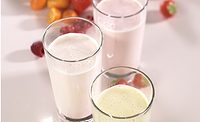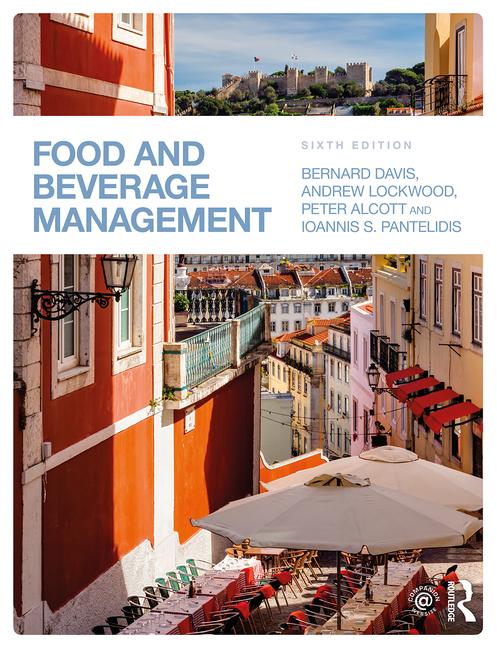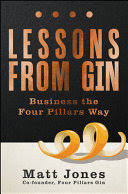What beverage-makers need to know about Nutrition Facts label change
Taste and texture important attributes during calorie reduction

The industry has recognized that consumers’ food and beverage consumption habits have changed during the past two decades. Trends are showing that consumers want more information about products to help them make informed choices that also fit their health goals. Today, the industry actively is considering the implications of the announcement that the U.S. Food and Drug Administration (FDA) is requiring updates to the Nutrition Facts label by July 26, 2018. Now, more than ever, it’s important that manufacturers and ingredient suppliers work together to create healthier and tastier options for consumers.
Beverage manufacturers, in particular, will be greatly impacted by the label updates. Here are the Top 5 considerations they should keep in mind as the labels change:
Solutions for reducing calories
One of the big changes to the label includes an emphasis on total calories.
We know that U.S. consumers are concerned with reducing overall calorie consumption. In fact, 65 percent say that calories are the No. 1 thing they look for on the front or back of packaging, according to research conducted by FoodMinds for Tate & Lyle in February 2015.
Many beverage manufacturers already have begun to reduce calories by replacing or reducing sugars. Since 2008, there have been 6,636 soft drinks and 758 hot drinks launched in North America with low-calorie, sugar-free, no-added-sugar and low-sugar claims, according to Innova, Food and Drink Categories, NOAM. Yet, reducing calories by removing sugars calls for some additional considerations.
Acknowledging ‘added sugars’
Consumers also are looking to reduce overall added sugars. In the United States, 54 percent of consumers report they are actively trying to consume less sugar, based on online research conducted by Tate & Lyle in July 2015 of 7,200 respondents from the United States, Mexico, Brazil, the United Kingdom, France, Germany, Russia, China and Japan. This finding is reflected in the updated “added sugars” line item on the new labels.
Despite the fact that Americans are trying to decrease their calorie and sugar intake, they’re not willing to sacrifice on taste. Recent data from the International Food Information Council (IFIC) found that 84 percent of Americans claim taste as their No. 1 purchase driver, according to a 2016 IFIC Food and Health Survey.
If beverage manufacturers want to replace or reduce the amount of sugar in their beverages, they have to remember that finding an ingredient solution is never a one-for-one exchange.
Taste still is king
When formulating beverages, manufacturers should keep in mind the synergy that could occur when combining sweetening ingredients to achieve sugar reduction. These sweetener synergies enable beverage producers to efficiently create low-/no-calorie and low-/no-sugar sweetener blends with the right sweetness intensity.
For example, the sweetness of high-potency sweeteners plateaus at higher sweetness levels. Allulose, a low-calorie sugar, can significantly reduce the amount of high-potency sweeteners needed to achieve a higher sweetness level. When formulating with allulose, the amount of a high-potency sweetener, such as stevia, can be reduced by more than 40 percent to achieve a 10 percent sugar-equivalence.
Delivering taste & texture
Taste is king, but texture also is a very important part of the equation when formulating beverages. When creating low-fat milks or milkshakes, manufacturers must remove sugars and fat, which can significantly impact the texture of the beverages.
At this year’s Institute of Food Technologists Expo, Tate & Lyle showcased a spicy, low-fat chocolate milk. A unique blend of allulose, crystalline fructose, monk fruit extract and stevia was used to achieve a 33 percent sugar-reduction and a 25 percent calorie-reduction compared with a national brand of low-fat chocolate milk; this is in comparison with a national brand of low-fat chocolate milk that contains 180 calories and 30 grams of sugar in a 1-cup serving.
Allulose provided a calorie reduction while also delivering the texture of sucrose, and crystalline fructose also was used to help maintain texture. With a mixture of monk fruit and stevia, we were able to replace sugar with “natural” options without a bitter aftertaste.
New labeling, new solutions
As beverage manufacturers work to continue to create and optimize their offerings to fit the needs of their target audiences, it is even more important, with the recent updates, to lean on ingredient providers with strong formulation expertise and an extensive portfolio of solutions to meet labeling needs.
This proficiency will empower beverage manufacturers with the right ingredients and solutions to accurately label their products to ensure consumers are better equipped to make informed food decisions. BI
Looking for a reprint of this article?
From high-res PDFs to custom plaques, order your copy today!








